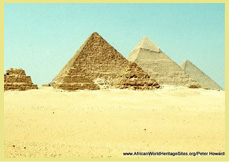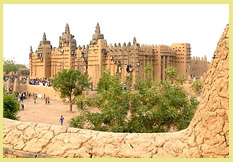




Human origins

Africa is the ‘Cradle of Humankind’ – the place where a number of early hominid species first started to emerge from the continent’s forests and walk on two legs across the plains. We are only just beginning to piece together the evidence for this evolutionary process, and understand how some evolutionary lines turned out to be ‘dead ends’ – and one led to the emergence of modern man, Homo sapiens.
Four of the continent’s most important palaeontological sites, where fossil hominid remains have been found, are designated world heritage sites. It is probably no coincidence that three of them are located in Africa’s Great Rift Valley, which may have served as an ‘evolutionary crucible’ as rapidly changing environmental conditions provided the stimulus necessary for the emergence of the first hominids about 3-4 million years ago. Two of these Rift Valley sites – the Lower Valley of the Awash, and the Lower Valley of the Omo – are in remote parts of Ethiopia where they are rarely visited except by members of the scientific community. A little further south in northern Tanzania is Olduvai Gorge, made famous by the astonishing discoveries of Louis and Mary Leakey. Here in the Ngorongoro Conservation Area layers of volcanic ash and other sediments have revealed evidence of our ancestor’s walking upright on two feet (the famous ‘Laetoli footprints’) as well as hominid fossils from different stages in the evolutionary process, tools and the fossilised remains of many of the large mammals that roamed the area at the time. A similar diversity of hominid fossils and other evidence has been discovered far to the south, in the caves and limestone quarries near Johannesburg at Sterkfontein and neighbouring sites.
Understanding the value of any of these sites requires specialist knowledge, or first-class guiding and interpretation. The excellent visitor centres at the South African sites provide an unparalleled educational and visitor experience, adding immeasurably to the value of the place for most people. There is also a very useful small museum and interpretation centre at Olduvai Gorge, where visitors can learn more about human evolution and the discoveries at Olduvai. But the two Ethiopian sites are much less developed and it may well be some time before these important places are developed for visitors on account of their remote locations.

Want to know more?
Download this 14-page guide to the key hominin fossils found across the continent, and the story of human origins and evolution. The Guide is based on displays at the National Museum of Kenya (Nairobi) and includes a narrative on human evolution; photos of 19 key hominin fossils; artists impressions of four human ancestors; a map of hominin fossil locations; a diagrammatic representation of the human family tree; and 'interest boxes' on stone tools and methods of dating fossils. To download this free educational guide, click here.
To read more about each of the world heritage sites concerned with human origins, and see a slideshow of each place, follow these links:




.jpg)